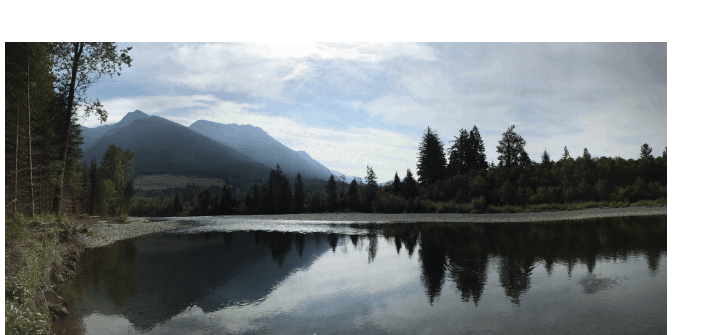Words by Geneva Boliek Poling | Photos by Blair Ryan
1. Be Prepared AND Adaptable
Anytime I have a big event or trip coming up, I go into planning overdrive. I make lists and sub-lists and sub-sub-lists outlining everything I might need because I’m paranoid about forgetting something important like my insulin or underwear (you know, the essentials). For a trip like the North Coast Trail, I tried to think of all the variables that could happen on the journey like failed CGMs or pump sites falling out (ew, I know. But it actually happened!) so my packing list for diabetes supplies was as thorough as possible.
But if diabetes has taught me anything, it’s that you can’t predict the future. My pump site got knocked loose on the trail while I was hauling myself up a slippery climb and I didn’t even notice until hours later when my blood sugar was unreasonably high and I saw the blood seeping through my shirt from the irritated site. Thankfully I had packed enough extra sites to do a quick change and get my BG back on track. I had to rethink where on my body I would put my new site because of the addition of a 65L pack strapped around me, hitting all the spots where I usually wear my site. Adapting to my gear and environment was an important lesson. You can be as prepared as you like, but there will always be some unpredicted occurrence that you haven’t dreamed up in the planning stage. The trick I’ve found is to cover your bases (bring a glucagon kit, folks. You won’t need it but you’ll be glad you have it), and be creative with your surrounding and supplies. Be adaptive to your situation and everything will fall into place.
2. You Are Capable of More Than You Think
On day 4 of our hike we decided to push on to a campsite that loomed about 7.5 kilometers away and we had already covered about 12. This would make for about 20 kilometers in a day over tedious terrain. I had hit a wall, mentally and physically. Scrambling through the muddy woods, tripping over roots, climbing slippery stumps, twisting ankles, low blood sugar… I honestly did not understand how I was going to make it to our destination. The thing about being out in nature, like WAY out, is that sometimes you really don’t have the choice to stop. The options were “Keep Going” and “Keep Going After Chocolate”. Necessity is great motivation, and as a diabetic I understand this on a deep level of survival. That day, my body took me 20 kilometers over stony beaches and gnarled forest floors. I was impressed by how resilient my body felt, even though I was aching and scraped up at the end of the day. I learned that diabetics have a hard time saying no to a challenge.

3. It’s Okay to Ask for Help
So I’ve also learned that diabetics are independent operators. Maybe this comes from the isolating nature of the disease where often we are the only members in our family or friend group that are diabetic and therefore we are used to self-sustaining ourselves. On the trail, I depended on lot on my fellow hikers for support even if it was simple things like helping each other lift our packs on in the morning or hitting up your neighbor for snacks when you’re low. There were times on the trail when we were literally pushing each other over tree trunks or pulling your friends across a river via cable car. T1D is a lonely disease, but it doesn’t mean that you have to go at it alone and you don’t lose badass points by asking for a hand.
4. See the Details and the Big Picture
Every morning when I stepped out of my tent, the first thing I’d see was the Pacific Ocean stretching out into oblivion. Or Alaska. Whichever comes first. I was confronted with this feeling throughout the day in various iterations; enormous red cedar trees towering over my head or pebble beaches that vanished into mist. I would think about the immensity or the trail and the looming number of kilometers ahead of us each day. But then I started to focus on the each little thing that is an aggregate of the larger environment. Each pebble on the beach was almost a perfect orb, smoothed by the water and piled on each other creating hills. That’s crazy! You know the expression “you can’t see the forest for the trees”? Well, I think you can! Look at those individual trees. Each one is twisting in its own unique path towards the sunlight. The forest is the trees. Is your mind blown yet?
5. Catch Your Breath
There are journeyers and there are destination-ers. I am the latter. Rarely do I remember to lift my head up and look around and appreciate where I am. The North Coast Trail changed this. Every moment I was confronted by a challenge or some kind of unfamiliar sensation that would force my attention to the present. Things like stopping to filter water, sitting on a boulder while you treat a low BG, peering out of the forest to get a glimpse of the ocean… All these things make you take in the environment that you are surrounded by and that you are part of. Even slipping in the mud makes you admire the moss on the ground. Although our mornings at camp were usually a push to get on the trail early, I don’t think there was ever a time that we didn’t pause while drinking coffee to look out silently at the ocean glittering as the morning mist cleared. It will do wonders to stop for little moments like that to be an active witness to where you are, in that second, and how happy you are to be there. Take a breath and appreciate the air around you.

About Geneva Boliek Poling
 Geneva grew up in Corrales, New Mexico, a small agricultural town located along the Rio Grande River. She was diagnosed with Type 1 diabetes 5 years ago when she was 17. Just a few months after her diagnosis, she started college at the University of New Mexico, and shortly after was accepted into an art program that took her on an intense trek throughout the southwest desert. Geneva found that while managing her diabetes in unwelcoming environments, from boiling hot afternoons in Texas to freezing nights in Colorado, she was able to overcome the physical limitations she thought would stop her from adventuring. Ever since she has sought out challenges that take her outdoors and affirm her confidence in her body’s ability to take her wherever she wants to go.
Geneva grew up in Corrales, New Mexico, a small agricultural town located along the Rio Grande River. She was diagnosed with Type 1 diabetes 5 years ago when she was 17. Just a few months after her diagnosis, she started college at the University of New Mexico, and shortly after was accepted into an art program that took her on an intense trek throughout the southwest desert. Geneva found that while managing her diabetes in unwelcoming environments, from boiling hot afternoons in Texas to freezing nights in Colorado, she was able to overcome the physical limitations she thought would stop her from adventuring. Ever since she has sought out challenges that take her outdoors and affirm her confidence in her body’s ability to take her wherever she wants to go.





